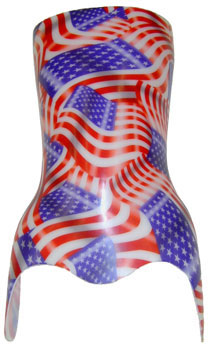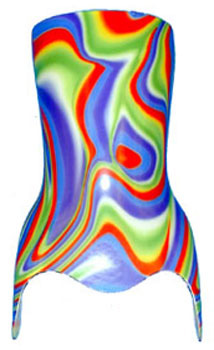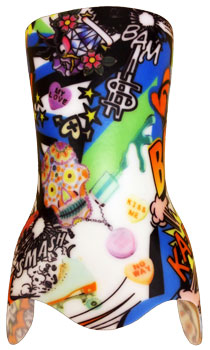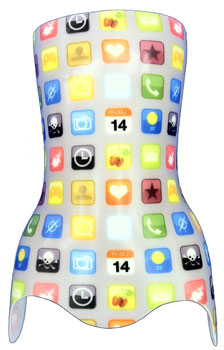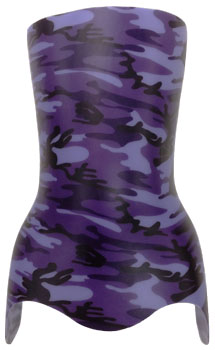We’re experienced with each of these spinal conditions and we are happy to invest the time to talk with you and your family about which type of brace would be the most helpful and the best choice for you and your lifestyle.
Scoliosis:
There are several different types of scoliosis and your physician has probably talked with you about the specifics of your situation.
- Early onset types, usually with some specific genetic component, that can be apparent at a very young age.
- The more familiar adolescent scoliosis that is of unknown origin (although some really interesting research is being done!).
- Degenerative scoliosis that is often the result of changes later in life as gravity takes it’s toll.
Adolescent Scoliosis
Scoliosis bracing for young people presents some unique challenges. We’re experienced with bracing kids from 18 months old to 18 years old. There are lot of interesting options and we can talk with you about all of them. Also, there’s going to be regular follow up needed for keeping the fit dialed-in, so convenient location is critical. I’ve often worked with people being followed by physicians elsewhere such as Boston Children’s Hospital for example, to help with this.
It’s a lot to expect that your child will be willing to wear a brace for an extended period of time. They’re either very young kids or going through adolescence and having raised two (wonderful) daughters myself, I understand how tough that can be without the added stress of something like the prospect of bracing.
The kids that do well with it though, are the ones that are engaged and who have their parents support. That’s why talking with them directly, treating them as individuals and addressing their fears and concerns is key. Spending as much time as necessary helping them understand the “why” of their treatment is so important. We’ll help with the transition and with ongoing support in every way we can.
We’ll also do everything we can to personalize the brace for them. We’ll use computer aided design to get an exact fit for your child because having it feel like it looks “like” them makes it more familiar. We’ll also let them design the look of it, picking out fun colors, patterns and decals or keeping it as “invisible” as possible.
Here are some of our favorite resources if you or your child want to dig a bit deeper.
- http://www.srs.org/patient_and_family/scoliosis/
- http://www.spine-health.com/conditions/scoliosis/scoliosis-what-you-need-know
- http://www.niams.nih.gov/health_info/scoliosis/scoliosis_ff.pdf
Adult Scoliosis
Sometimes a curve acquired at a young age is stable through a lot of adulthood. At some point, gravity starts to worsen things and a tolerable curve becomes painful and debilitating. At this point there are often few surgical interventions. Physical therapy can often help stretch and strengthen the core but for some this isn’t enough.
Bracing can often be a lifesaver in situations like this. Interestingly, you often don’t need to wear a brace all of the time to still get a lot of benefit. We actually want to be careful not to weaken your muscles by having you become dependent on a brace.
We’ll work with you carefully to help you get used to your brace, wear it enough to really help with your symptoms and then learn to decrease your wear-time until you find that place where you’re wearing it “just enough” to be helped without having to wear it all the time. The improvement in people’s lives can be really tremendous! (I know a 71 year old barber who was almost forced into retirement before he was ready because of his debilitating pain but now he’s back on his feet and cutting hair full time!)
Bracing for Spinal Issues:
There are many different spinal conditions that can be improved by bracing and your physician has probably talked with you about the specifics of your situation. Here’s a quick look at some of the possibilities. If any of these are affecting you, we may be able to help!
Fractured vertebrae. Sometimes an accident like a fall or motor vehicle accident can result in an actual fracture to the vertebrae in the spine. These can range from very unstable and dangerous to stable but causing severe chronic pain. With bracing, for sometimes as little as a couple months, we can make a world of difference to your comfort and your safety.
Degenerative changes. As we age there can be changes in the spine that result in pain with certain activities-degenerative disks, stenosis, neck pain. Many people with really debilitating pain aren’t candidates for surgery. This is a place where physical therapy can often be a great assistance but bracing is often overlooked as another safe, effective way to restore function.
Postural support. A lot of people are dealing with a lot of pain although they may not need a great deal of help to improve things. Kyphosis, hyperlordosis, even excess weight can trigger back issues that we can help with using simple, soft braces that are relatively easy to use and live with.
What We Can Offer
We’re experienced with all of these conditions and can talk with you about which type of brace would be the most helpful and the best choice for your lifestyle. In cases where there’s an urgent need (such as a spine fracture) we can deliver bracing within 24 hours! If you have questions about whether bracing might be helpful for you, we’re here to talk-consultations are always free. Just give us a call to schedule an appointment.

